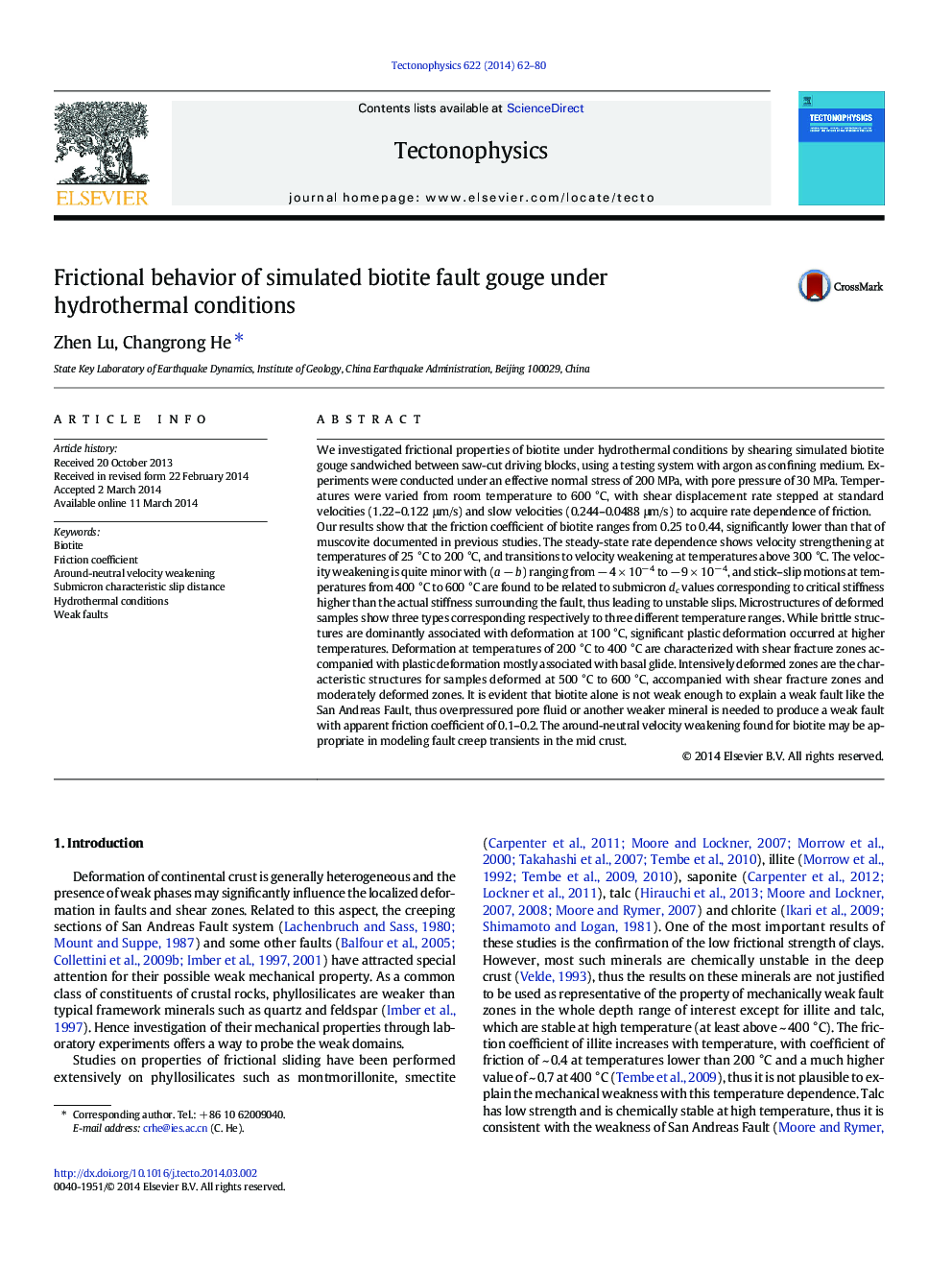| کد مقاله | کد نشریه | سال انتشار | مقاله انگلیسی | نسخه تمام متن |
|---|---|---|---|---|
| 4692040 | 1636768 | 2014 | 19 صفحه PDF | دانلود رایگان |
• Frictional strength and stability of biotite were studied at hydrothermal conditions.
• The friction coefficient of biotite is smaller than that of muscovite.
• Around-neutral velocity weakening occurred at temperatures from 300 °C to 600 °C.
• Submicron characteristic slip distance is inferred from stick–slip motions.
We investigated frictional properties of biotite under hydrothermal conditions by shearing simulated biotite gouge sandwiched between saw-cut driving blocks, using a testing system with argon as confining medium. Experiments were conducted under an effective normal stress of 200 MPa, with pore pressure of 30 MPa. Temperatures were varied from room temperature to 600 °C, with shear displacement rate stepped at standard velocities (1.22–0.122 μm/s) and slow velocities (0.244–0.0488 μm/s) to acquire rate dependence of friction.Our results show that the friction coefficient of biotite ranges from 0.25 to 0.44, significantly lower than that of muscovite documented in previous studies. The steady-state rate dependence shows velocity strengthening at temperatures of 25 °C to 200 °C, and transitions to velocity weakening at temperatures above 300 °C. The velocity weakening is quite minor with (a − b) ranging from − 4 × 10− 4 to − 9 × 10− 4, and stick–slip motions at temperatures from 400 °C to 600 °C are found to be related to submicron dc values corresponding to critical stiffness higher than the actual stiffness surrounding the fault, thus leading to unstable slips. Microstructures of deformed samples show three types corresponding respectively to three different temperature ranges. While brittle structures are dominantly associated with deformation at 100 °C, significant plastic deformation occurred at higher temperatures. Deformation at temperatures of 200 °C to 400 °C are characterized with shear fracture zones accompanied with plastic deformation mostly associated with basal glide. Intensively deformed zones are the characteristic structures for samples deformed at 500 °C to 600 °C, accompanied with shear fracture zones and moderately deformed zones. It is evident that biotite alone is not weak enough to explain a weak fault like the San Andreas Fault, thus overpressured pore fluid or another weaker mineral is needed to produce a weak fault with apparent friction coefficient of 0.1–0.2. The around-neutral velocity weakening found for biotite may be appropriate in modeling fault creep transients in the mid crust.
Journal: Tectonophysics - Volume 622, 21 May 2014, Pages 62–80
